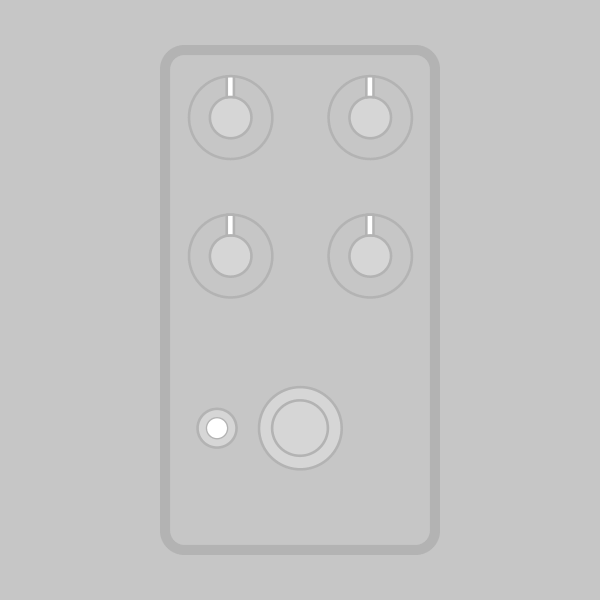
The Astra Silicon Fuzz is a clone of the Astrotone Fuzz, also released as the Sam Ash Fuzzz Boxx (yes, there are three Z’s and two X’s!). It was manufactured by the Universal Amplifier Company in New York City from 1966-1968.
The Astrotone was one of the first silicon fuzz units, developed in an era when germanium transistors were still widely used. It’s also one of the first effects pedals to feature a tone knob, although it’s not particularly effective in this circuit (at least not without some modifications) and later fuzz pedals such as the 3-knob Tone Bender greatly improved upon the concept.
Analogman released his version of the Astrotone, conveniently also called the Astrotone since the original trademark had expired. It has the exact same topology, but has several component values changed out to round out the tone and remove the thinness of the original. It’s not an exact clone, but it’s still very highly regarded. A parts list for the Analogman version is provided in the build documentation alongside the original version.
The updated version of the Astra includes a toggle switch to select between three different sets of clipping diodes. Since the circuit uses hard clipping with no volume recovery stage afterward, the clipping diodes will directly impact the maximum available volume.
The original Astrotone used 2N3565 transistors, which varied widely in gain. While we haven’t measured transistors taken from an actual Astrotone, we have measured many different 2N3565 transistors from different decades, including the late 1960s. Some batches were in the 180-220 range. similar to the 2N3904, and others were more like 400-500, similar to the 2N5088. The lower-gain ones were more prevalent.
The exact gain characteristics of the 2N3565 transistors used in the original Astrotone are not known, but it doesn’t matter too much. The important thing to know is that there is nothing special about the original vintage transistors. The 2N3904 will sound exactly the same.
Photos of original Astrotone units show that it used DO-7 glass case diodes, which are usually associated with germanium. However, the original manual for the Astrotone claims it uses all silicon semiconductors (which includes diodes)—and in the 1960’s when small-signal silicon diodes were first coming on the market, there were a lot of them in the DO-7 case, since that was the format used by most diodes. Therefore, while DO-7 silicon diodes are rare today, this would not be uncommon to see in 1966.
The other evidence in favor of them being silicon is more practical: since they’re hard clippers with no gain recovery afterward, they would directly impact the max volume level. At ~0.3V forward voltage (typical for germanium), it would clamp the maximum volume at unity or lower, and the original units would have a hard time achieving unity gain if they were in fact germanium diodes.
So, on balance, we’d conclude that despite looking like germanium didoes, the Astrotone was an early adopter of silicon diodes. And allowing that they are in fact silicon, the standard 1N914 would be an exact replacement.